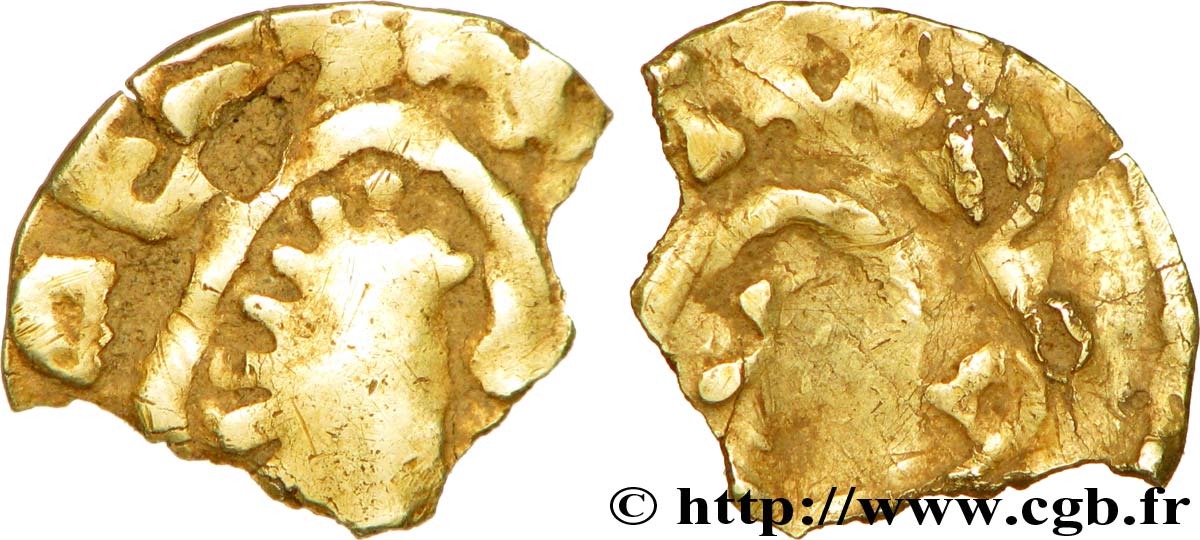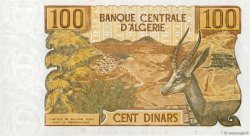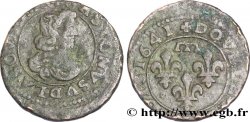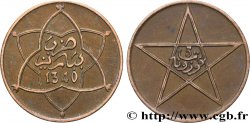bmv_223492 - MEROVINGIAN COINAGE - TOULOUSE (TOLOSA) - Aquitania Triens à la tête stylisée, fragmentaire
无库存.
所有在网站上销售的产品 (2011)
价格 : 420.00 €
所有在网站上销售的产品 (2011)
价格 : 420.00 €
种类 Triens à la tête stylisée, fragmentaire
日期: VIIe siècle
铸币厂名称/城市 Toulouse (31)
材质 gold
直径 12 mm
模子方针 11 h.
重量 0,77 g.
稀少度 R3
关于品相的说明
Monnaie fragmentaire, avec des cassures irrégulières. Le flan est voilé avec quelques défauts de surface, de frappe assez vigoureuse au droit, mais molle au revers. Restes de concrétions terreuses dans les creux
正面
正面的文字 [+ TOLO - S]AE=C.
正面的说明书 Tête barbare diadémée, les cheveux hirsutes, à droite ; un astre devant le front et la légende autour.
背面
背面的文字 [+ PIASSCVV].
背面的说明书 Une croix à six bras (?), dans un grènetis intérieur ; légende autour du grènetis.
评论
Cette monnaie fragmentaire est du même type que le n° 1196 au sujet duquel nous écrivions :
“ Si la légende de droit, TOLOSA, ne laisse guère de doute sur l'attribution de ce triens à Toulouse, il reste difficile à classer et à intégrer dans un monnayage de Toulouse déjà très varié et hétérogène. Avec un flan si large, ce triens pourrait rappeler certaines frappes wisigothiques. Mais Toulouse n’est pas repris comme atelier des Wisigoths et si certaines monnaies peuvent présenter une tête de profil avec ce genre de coiffure, aucune monnaie wisigothique ne présente un tel revers.
Quoi qu’il en soit, cette monnaie d’un style très barbare, mais sur un flan en bon or, semble complètement unique et sans équivalent ”.
Sur cet exemplaire, le début de la légende TOLO est hors flan, mais les similitudes avec le triens de MONNAIES 43 ne laisse aucun doute !.
“ Si la légende de droit, TOLOSA, ne laisse guère de doute sur l'attribution de ce triens à Toulouse, il reste difficile à classer et à intégrer dans un monnayage de Toulouse déjà très varié et hétérogène. Avec un flan si large, ce triens pourrait rappeler certaines frappes wisigothiques. Mais Toulouse n’est pas repris comme atelier des Wisigoths et si certaines monnaies peuvent présenter une tête de profil avec ce genre de coiffure, aucune monnaie wisigothique ne présente un tel revers.
Quoi qu’il en soit, cette monnaie d’un style très barbare, mais sur un flan en bon or, semble complètement unique et sans équivalent ”.
Sur cet exemplaire, le début de la légende TOLO est hors flan, mais les similitudes avec le triens de MONNAIES 43 ne laisse aucun doute !.








 对产品描述纠错
对产品描述纠错 打印
打印 分享我的选择
分享我的选择 提问
提问 Consign / sell
Consign / sell







